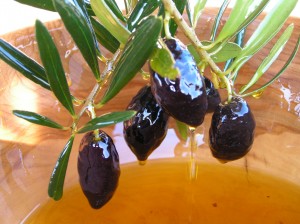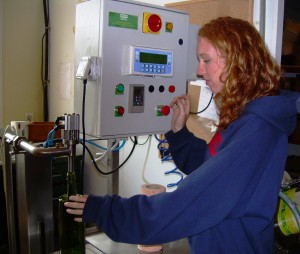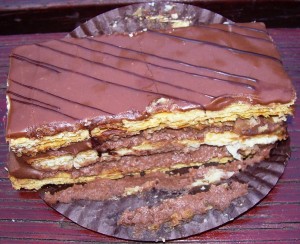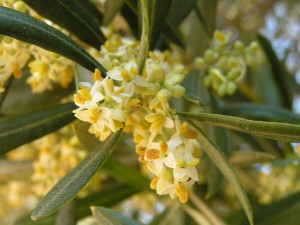I have found my official favorite dessert of all time, and as promised, I am posting information on how the Domaine de l’Oulivie integrates value added tourism into their products to diversify themselves from competitors. Also, since I will be leaving before the olives are ripe, I was able to obtain pictures of the harvest from the Domaine de l’Oulivie, for everyone’s viewing pleasure. I had mentioned the trees flowering in previous blogs, so it is nice to now have images.
While at SupAgro University, we had a chance to meet with professor Fatina Fort to discuss her research on consumer perception of terroir products. Our discussion was fabulous for helping me understand value added strategies used by producers, some of which I am now witnessing at the Domaine de l’Oulivie. She pointed out that in order for farms to succeed, there needs to be producer motivation, a market for the products, and an image that consumers can have about the producers or the region that is reflected in the product. She discussed strategies for producers such as quality and market segmentation, how to create added value, and what is needed to construct the “terroir/origin effect” on the consumer.
The Domaine de l’Oulivie adds value by integrating and inspiring tourism. They have a quaint shop so there is an outlet for direct selling from the producer, and they welcome the public with activities such as festivals, and tours of their museum.
To further diversify from competitors, the Vialla brothers have planted heirloom olive varieties collectively called “Grand Crus,” meaning that the cultivars are all local varieties, no more than 300 trees are planted per hectare, and no more than 4 liters of oil per tree is harvested. The older varieties are unique in the market and embody the region, a crucial element of success as discussed by professor Fort. For example, the Farigoule variety is olive oil blended with herbs that grow in the Garrigue, the local natural vegetation. According to the legend, olive oil producers “back in the day,” would add herbs of the Garrigue to the last pressing to sterilize or clean the pressing equipment. They would keep this last “inferior” herb tasting olive oil for themselves. The Domaine de l’Oulivie now routinely adds herbs to their oil even though the process is modernized and does not need the traditional herb sterilization. So far, it is one of my favorite oils and I have even had the chance to bottle it!
The farm is also going organic, which means they can have an organic label AB, or in French called Agriculture Biologique, which will be on the products. There are some policy disputes about this as organic laws are becoming standardized across the EU. Despite this, this is the first year that the Domaine de l’Oulivie’s products will be carrying this label. This is a definite added value strategy since an organic label will open up the market and command higher prices.
I inquired about the major complications of the olive farm to learn more about this whole value-added tourism aspect, and apparently going organic is a definite hassle despite its eventual rewarding outcome. Since no herbicides are used, the farm employs two cows and two horses to mow and fertilize the olive groves. Also, the olive tree’s major enemy is the olive mouche, a fly that normally would be easily controlled by pesticides. Instead, the farm sprays the ripe olives with clay which turns the olives white so that the fly does not recognize the fruit as egg laying territory. Unfortunately, this clay comes off with the rain, what little rain they usually get here, and is more expensive.
Finding new clients can be problematic, but the new organic label is projected to attract a new customer pool. I love France and feel that I am learning so much here from so many vantage points! In my next posts, I will discuss how agricultural policy makes this type of operation possible, olive oil consumption trends as they are observed by the Domaine de l’Oulivie, and any other adventures I have on the farm. In the meantime, feel free to savor this picture of deliciousness, it is chocolate MilleFeuille which translates to mean a thousand sheets since there are so many layers of heavenly pastry.


Speak Your Mind